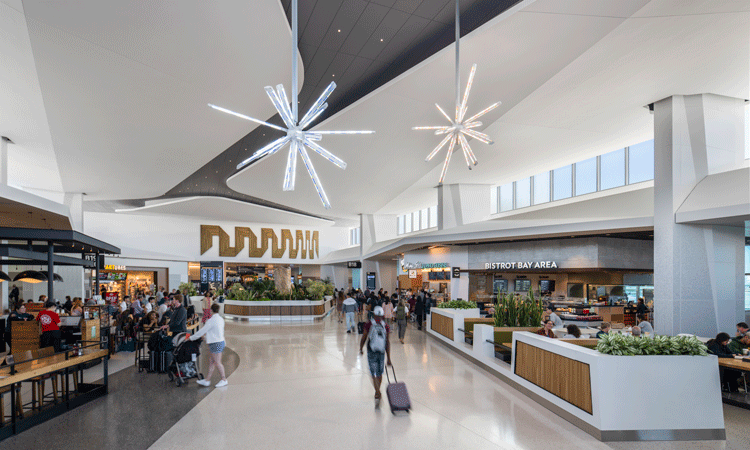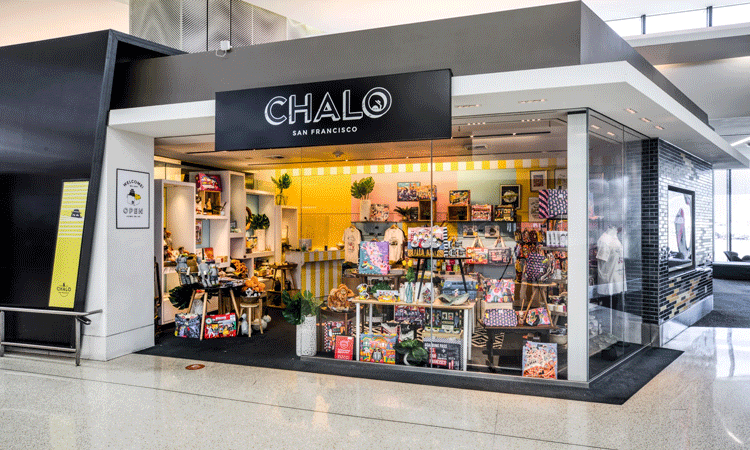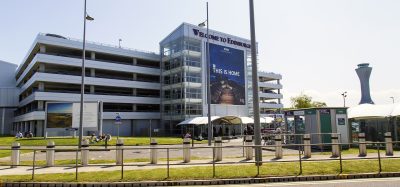Developing a local F&B and retail programme for San Francisco Airport
Posted: 4 October 2024 | Cheryl Nashir | No comments yet
Cheryl Nashir, Director of Revenue Development at San Francisco International Airport speaks exclusively to International Airport Review about how they are seeking to create a world-class commercial and food offering for their passengers.


c: 2024 Karl Nielsen
Please tell us a little bit about your role at SFO?
I oversee the concessions at the airport. That includes restaurants, stores, retail services and the rental cars. We’re business developers and property managers, and we have a large local programme at the airport that is our great pleasure to cultivate and grow and deliver to our passengers. San Francisco is such a great city. We have a great culinary tradition to work with and a very strong geographic region. So, it makes our jobs a lot easier to be able to do what we do in such a world-class city.
What is your current non aeronautical two aeronautical revenue split?
The current split is approximately 20% to 80% – 20% is non-aeronautical revenues. We work really hard. I’m chagrined to tell you it’s only 20%, but we work really hard for that 20%!
How are you looking to diversify your revenues away from these airline-based revenues?
We’re looking under every rock. We developed a hotel a few years ago and it is likely we could have another hotel on property, maybe even in different categories of hotel such as a short stay hotel in the terminal. But away from the terminal, we’re looking, like many others have, at yield pricing in our parking area.
SFO has been named as one of the top 10 airports in the world for food and drink by Food and Wine Magazine in their 2024 Global Tastemaker panel. What is it about your food and beverage concessions that have secured you this award, in your opinion?
We are so honoured to receive this award again, and I attribute it to our local programme. We have very few national brands in our food and beverage programme. As I mentioned, because we have such a strong culinary tradition in the area, it’s in the Bay Area, it’s very easy for us to go out and bring the best of local, whether that be sushi or healthy options, great grills or seafood. The public wants to know where they are when they’re at the airport. Our passengers deserve to have that local San Francisco experience all the way out the door. So, I attribute it to really strong local concepts. I also attribute it to healthy and quality food. We have had a sustainable food programme for more than 10 years now, and it’s a requirement that our concessionaire offer as much farm-to-table and organic and healthy food as possible.
In October last year, you celebrated the day of the dead festival at the airport. What sort of effects do experiential events like this have on passenger spend?
We have not drawn a straight line between our experiential effects and spending. I would say however, that we are very committed and real believers in the concept that affecting how our passengers feel somatically in their bodies, in their minds while they’re in our facilities, absolutely leads to greater satisfaction. And I think that must translate to a greater spend. I’ve been a strong believer in that in the right environment, I’m willing to spend more money than I am in a lesser, not so aesthetic, experience.
Your pop-up concession programme recently celebrated 10 years since its conception, and makes it easier for small businesses to gain access to the airport. How many spaces are available? How long is the tenure and who is currently in this space?
We love this programme. It’s a two-year lease which we increased from the original one-year. Our current tenants are called Chalo and Pack-n-Go, both small businesses, both women-owned. We developed these two spaces and they’re these beautiful glass boxes in the boarding area, so they’re well located and it’s given access to small businesses, which is always a challenge for us because construction costs are difficult at airports like ours. We’ve gone on to develop two more spaces that we may sometimes refer to as our graduate pop-up programme spaces, and those have seven-year terms. They’re in our Harvey Milk Terminal 1, and we’ve just leased those. Both of the successful proposers started out in our one-year programme. So we’re seeing these operators come in, give it a try and grow. A number of them have gone on to win longer term leases. A number of them have also gone on to have their wares sold by the big international newsstand operators. We really like fostering this group of people and we’ll expand this programme as we are able.


c: SFO
What trends are you observing in the airport concession space in terms of products, experience and tastes, and have you observed any trends in your passengers and the way they spend their money in your retail spaces?
Despite coming out of the pandemic, we’re not entirely back to where we were and maybe there is no going back to exactly where we were. I think our guests are more discriminating in their spend. Food and beverage is strong, and it continues to grow. Convenience is very strong. I would say the single-concept retail locations are challenged. It is the broad concept, general store or department store-type offers that we see an appetite for, as well as the very small, pop-up-style stores that have authentic and carefully curated concepts. However, electronics and news will always be the backbone of our retail programme. Duty free is obviously very important to us, but I think travellers have become more discriminating and do not want to walk into an airport and see it looking like their local mall. Passengers either want the carefully locally-focused small concept, or they want a really gorgeous selection in a large square footage location.
What challenges are you facing in your role?
I’ve been doing what I do for a very long time, and I feel as though I have a strong concern about cost in the future, labour costs, construction costs and the cost of commodities. I think our tenants are feeling pressure in all of these areas, and we as airports are going to have to pivot to address that. We intend to get everything we want, which is a great local programme, high satisfaction for our customers. But, I have serious concerns about whether we can do that with the structures that we’ve had in place for many years.
I would say for many years we’ve taken growth for granted, and I’m seeing, for the first time in my career, a cooling on spending. So, we’re going to have to work really hard for those dollars. We’re going to have to deliver something exceptional and special, and we’re going to have to be cognisant of tenant profit and loss statements.
Are there any opportunities that you foresee for this year that you are really looking to grasp hold of?
What I’m looking forward to is we’re nearly returned to pre-pandemic enplanement levels, and so we’ve winnowed down our programme. I think anything that was any part of our programme that was ‘average’ was not going to be good enough anymore. I look forward to a real refinement of what we do and to take it up a level, going after really quality products and services and merchandise for our sophisticated and deserving guests.
Cheryl Nashir is a Business Development Director with more than 30 years of ever increasing responsibilities in identifying and maximising opportunities for non-airline revenues in airport facilities. She has successfully organised, directed and administered professionals in conducting RFP, RFQ and bid processes to meet the needs of the travelling public at medium and large hub airports operated by several different types of governmental systems. Cheryl regularly participates in industry trade groups to promote strategic planning and visioning. She is a respected, solution-oriented and creative business partner to more than 80 individual tenants and a known leader in managing public-private partnerships in the airport marketplace and delivering large scale, successful airport concession redevelopment projects.
The International Airport Summit is open for registration!
Date: 19 – 20 November 2025
Location: JW Marriott Hotel Berlin
At our flagship event of the year, we will dive into the future of airport operations, with expert-led sessions on passenger experience, innovative smart technologies, baggage handling, airside operations, data, security, and sustainability.
This is where global airport leaders come together to share insights, challenges, and real-world solutions.
Limited complimentary passes are available for eligible professionals – first come, first served!
Issue
Related topics
Food and Beverage (F&B), Non-aeronautical revenue, Passenger experience and seamless travel


















